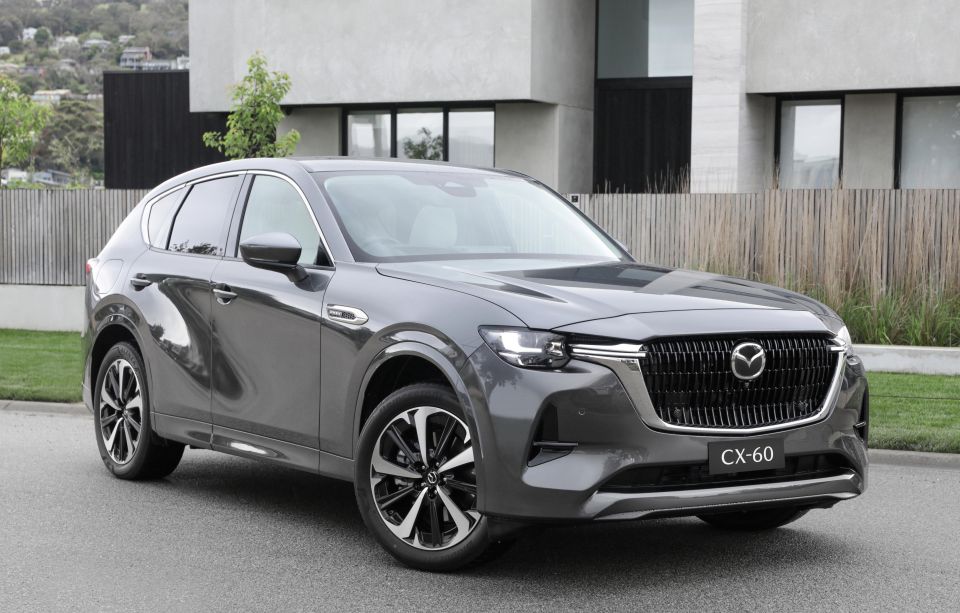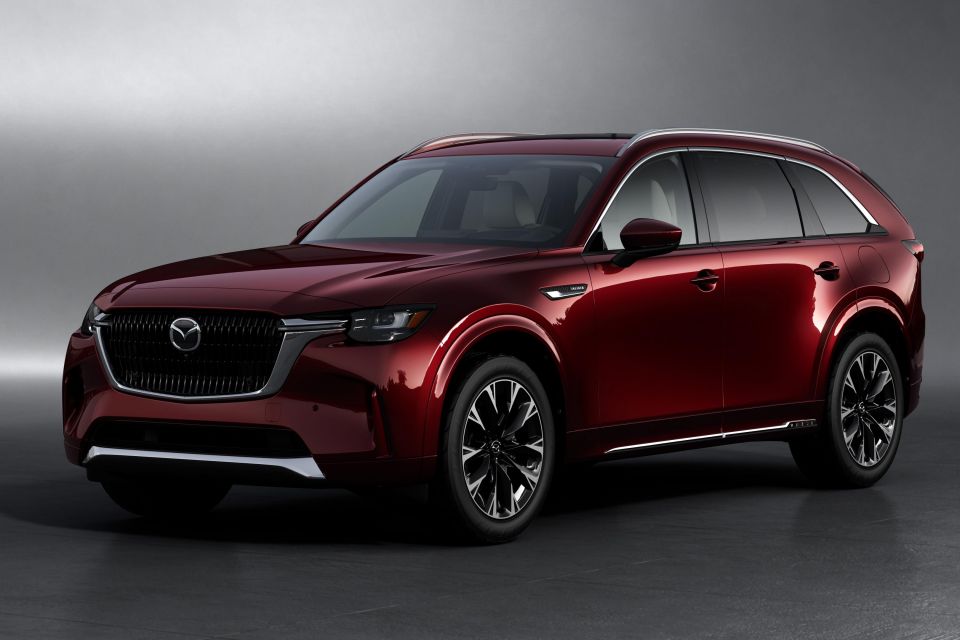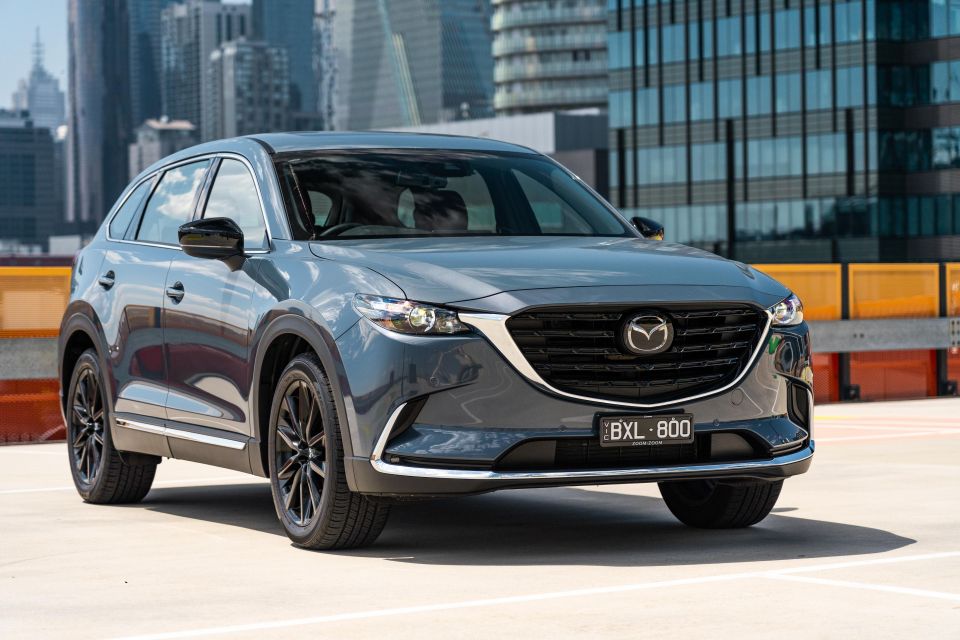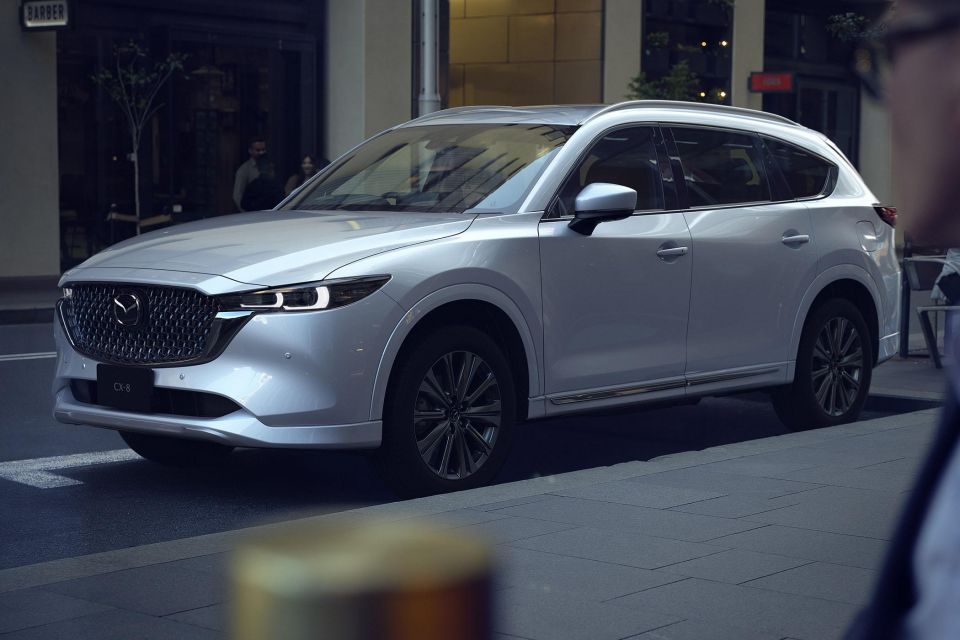

Max Davies
2025 Toyota Corolla SX review
6 Days Ago

News Editor
So long, CX-9. Hello, CX-80.
Mazda Australia has confirmed it will introduce the yet-to-be-revealed CX-80 SUV, but will discontinue its popular CX-9 after two generations.
The new CX-80 will slot into the brand’s local SUV line-up between the smaller CX-60 and larger CX-90, which will still be quite crowded even with the CX-9’s demise.
The company hasn’t confirmed launch timing for the CX-80, but says more information will follow later this year.

Mazda is rolling out four vehicles on its new rear/all-wheel drive Large Architecture: the narrower two-row CX-60 and three-row CX-80, developed with markets like Europe in mind; and the wider two-row CX-70 and three-row CX-90 for markets like the US.
The CX-60 and CX-90 are coming here this year, though the CX-70 has yet to be revealed or locked in for Australia. Mazda Australia says it’s still evaluating this model.
“We’re very comfortable we’ll end up with more market coverage and not less,” said Mazda Australia national marketing manager Alastair Doak.
“We’re quite comfortable that each will occupy a different space and tell a different story. If we weren’t comfortable, we might not have been confirming CX-80 today.
“They will be different, and they will have a very clear space in the portfolio.”

Mr Doak noted Mazda Australia was questioned when it introduced the CX-8 locally alongside the CX-9, and said both models ended up becoming successful even if they were initially perceived as being in-house competitors for each other.
We can expect a higher base price than the related CX-60, which opens at $59,800 before on-road costs in base petrol Evolve guise and tops out at $87,252 before on-roads for the plug-in hybrid Azami.
The CX-80 should therefore be a pricier proposition than the CX-9, which spans from $47,600 to $75,165 before on-road costs. A base price tag starting with a ‘6’ therefore seems likely.
In addition to developing the new Large Architecture, Mazda has also developed new inline six-cylinder petrol and diesel engines, plus its first plug-in hybrid powertrain for this platform.

Given the CX-60 and CX-90 have been confirmed to receive 48V mild-hybrid petrol and diesel and plug-in hybrid petrol powertrains in Australia, the CX-80 could also receive a similar powertrain line-up.
The CX-60’s 3.3-litre turbocharged inline-six petrol engine produces 209kW of power and 450Nm of torque – down 45kW on the CX-90’s six – with a claimed 0-100km/h time of 6.9 seconds.
The 3.3-litre turbocharged inline-six diesel engine produces 187kW and 500Nm of torque, good for a 0-100km/h time of 7.3 seconds.
The CX-60’s plug-in hybrid option comprises a 2.5-litre four-cylinder petrol engine, 100kW electric motor and a 17.8kWh lithium-ion battery pack, for total outputs of 241kW and 500Nm and a 0-100km/h time of 5.9 seconds.

Even with the CX-9 heading out the door, Mazda will still have three SUVs available with three rows of seating.
The CX-8, derived from the front/all-wheel drive CX-5, has just received a mid-life update and therefore looks set to have a few more years left in it.
First deliveries of the facelifted CX-8 should start arriving in Australia from April-May. Read more here.
MORE: Everything Mazda CX-60 MORE: Everything Mazda CX-90
Where expert car reviews meet expert car buying – CarExpert gives you trusted advice, personalised service and real savings on your next new car.
William Stopford is an automotive journalist based in Brisbane, Australia. William is a Business/Journalism graduate from the Queensland University of Technology who loves to travel, briefly lived in the US, and has a particular interest in the American car industry.


Max Davies
6 Days Ago


James Wong
5 Days Ago


James Wong
4 Days Ago


Max Davies
3 Days Ago


Josh Nevett
1 Day Ago


Max Davies
1 Day Ago